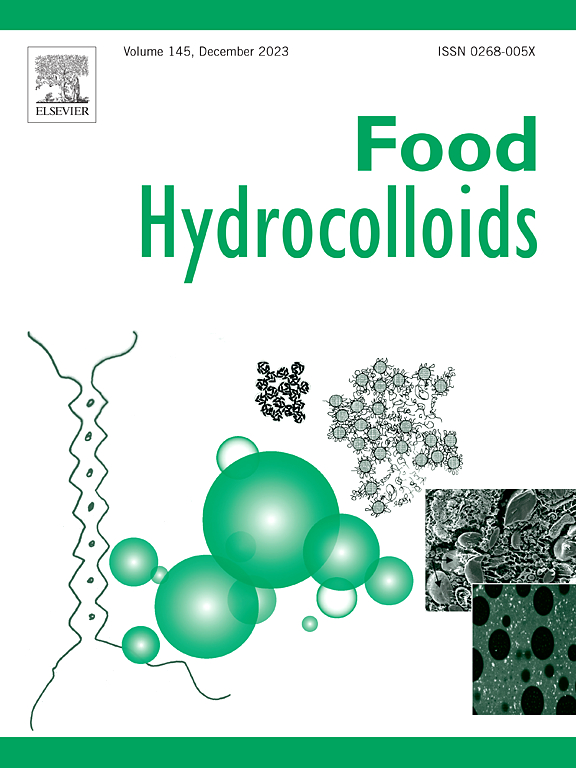Role of globulins and albumins in oil-water interface and emulsion stabilization properties of pulse proteins
IF 11
1区 农林科学
Q1 CHEMISTRY, APPLIED
引用次数: 0
Abstract
Pulse protein extracts have received considerable attention in food applications, for instance, as emulsifiers. These extracts are complex protein mixtures consisting primarily of globulins and albumins, but how these individual protein fractions affect the emulsifying properties is still poorly understood. In this study, we separated globulins and albumins from lentil, faba bean and chickpea, and systematically investigated their role in the stabilization of oil-water interfaces and emulsions. We identified key molecular and interfacial parameters of these pulse proteins (including the whole protein mixtures) which are important in emulsion stabilization. Pulse proteins with low denaturation enthalpy, a feature of the pulse albumins, tend to generate smaller oil droplets, most likely due to their small particle size (4–5 nm) which enables dense pack of proteins at the oil-water interface and promote the formation of stiff protein network structure that helps to stabilize the newly generated oil droplets during/after homogenization. High thermal stability, as observed in pulse legumin globulins, is detrimental to the interfacial stiffness, and the resistance of the interfacial network structure to large deformations due to the lack of protein-protein in-plane interactions and tend to give low emulsion stability under high shear blending. During emulsion storage, pulse albumins tend to cause droplet flocculation/coalescence also in the whole protein mixtures, likely due to their low surface charge and smaller particle size that could not provide enough electrostatic and steric repulson. Overall, albumins dominate the emulsion stability of pulse proteins under high shear blending, and globulins dominate the emulsion storage stability. This study may help to guide the screening of pulse proteins for desired emulsifying properties. The proposed key molecular and interfacial parameters could be used for further modeling, for example, based on artificial intelligence, to better understand and predict the functionalities of pulse proteins in multiphase systems.

求助全文
约1分钟内获得全文
求助全文
来源期刊

Food Hydrocolloids
工程技术-食品科技
CiteScore
19.90
自引率
14.00%
发文量
871
审稿时长
37 days
期刊介绍:
Food Hydrocolloids publishes original and innovative research focused on the characterization, functional properties, and applications of hydrocolloid materials used in food products. These hydrocolloids, defined as polysaccharides and proteins of commercial importance, are added to control aspects such as texture, stability, rheology, and sensory properties. The research's primary emphasis should be on the hydrocolloids themselves, with thorough descriptions of their source, nature, and physicochemical characteristics. Manuscripts are expected to clearly outline specific aims and objectives, include a fundamental discussion of research findings at the molecular level, and address the significance of the results. Studies on hydrocolloids in complex formulations should concentrate on their overall properties and mechanisms of action, while simple formulation development studies may not be considered for publication.
The main areas of interest are:
-Chemical and physicochemical characterisation
Thermal properties including glass transitions and conformational changes-
Rheological properties including viscosity, viscoelastic properties and gelation behaviour-
The influence on organoleptic properties-
Interfacial properties including stabilisation of dispersions, emulsions and foams-
Film forming properties with application to edible films and active packaging-
Encapsulation and controlled release of active compounds-
The influence on health including their role as dietary fibre-
Manipulation of hydrocolloid structure and functionality through chemical, biochemical and physical processes-
New hydrocolloids and hydrocolloid sources of commercial potential.
The Journal also publishes Review articles that provide an overview of the latest developments in topics of specific interest to researchers in this field of activity.
 求助内容:
求助内容: 应助结果提醒方式:
应助结果提醒方式:


